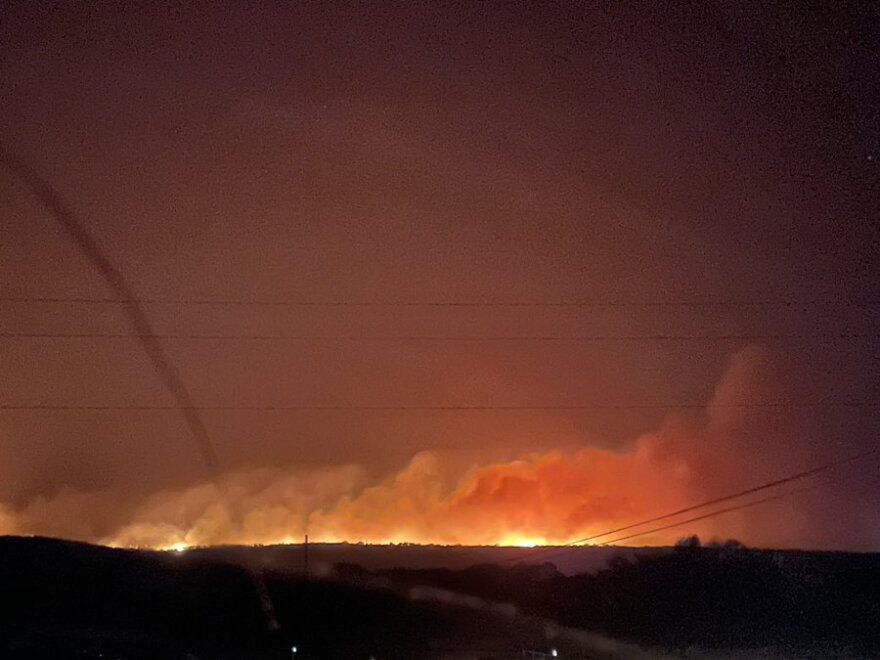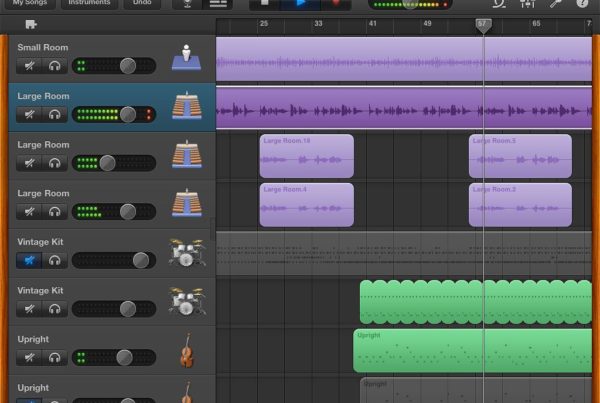More than a dozen homes near Glen Rose, Texas, about 50 miles Southwest of Fort Worth were destroyed by the fast-moving Chalk Mountain fire which has scorched 10 square miles of North Texas. And it’s far from the only fire threatening North Texas.
Reports say embers of burning tree crowns were flying up to 200 yards away. As of Thursday morning that fire is just 10% contained. Five homes are reported destroyed along the western shore of Possum Kingdom Lake, 500 acres has burned so far there, and that fire is only 25% contained.
A report from the Texas A&M Forest Service Thursday, says at least 10 wildfires are active in North Texas. But firefighters continue to try to extinguish many other fire outbreaks statewide, working with heavy equipment in temperatures of up to 110 degrees in some places, with high humidity and winds gusting at times as high as 20 miles per hour.
Since January of 2022, the Texas A&M Forest Service, which is in charge of the state’s wildfire response, has fought 6,500 wildfires. Those fires have destroyed 575,000 acres of land across Texas.
Wes Moorehead is the associate director of Forest Resource Protection and the Fire Chief at Texas A&M Forest Service. Listen to the interview above or read the transcript below.
This transcript has been edited lightly for clarity:
Texas Standard: How many wildfires have your crews been responding to this week or is it just constantly changing? Kind of hard to nail down a hard and fast number.
Wes Moorehead: Well, this week has definitely been elevated, but we’ve been elevated all the way through 2022 since January 1 this year. We’ve actually responded to 6,500 wildfires in the state, burn in just a little over 575,000 acres. So it’s been a very active year so far.
How does it compare to, say, last year or a year before? Is it way up?
Yes, this is actually above average for the state of Texas. We’re seeing more wildfires on the ground than we do on an average year, but it’s not unprecedented. We’ve had above average years several times just in the last 20 years, 2009, 2011, 2018. These were all active fire season, just like we’re experiencing now in 2022.
As it stands right now, has there been any loss of life?
You know, early on in the season, early on this year, we did see one deputy that was responding to help evacuate individuals ahead of a fire. And unfortunately, we did see a loss of life there. Overall, though, for the number of wildfires we’re experiencing in this state, the safety record is phenomenal. And it really speaks to the dedication and the professionalism of firefighters in the state.
214 Texas counties are under burn bans. Obviously, conditions continue to be hot and dry out there. What are you telling Texans about what they need to do right now when it comes to the current fire danger in the state?
And those burn bans are a good indication of what the conditions are locally. Of course, those burn bans are put on by local officials. And so that is a good indicator that no open fire should be conducted really across the state. We’ve got drought conditions. The drought monitor was just updated this morning. 99% of the state is in some level of drought and that really sets the stage for a wildfire. So any ignition, any heat source, any spark out there can start a wildfire and it can grow really rapidly under these conditions.
Is there a particular area in Texas that you are most concerned about right now?
To be honest with you, it is really border to border at this point with 9% of the state being in some form of drought. We can have fire literally anywhere. We are seeing more active wildfires in that I-35 corridor and just west of there. But as of this afternoon, with hundred degree heat, we could see one start anywhere.
Chief, are you concerned about your resources? I mean, do you have what it needs to deal with the wildfires right now and what are you projecting?
We’re very blessed in state Texas that we’ve got over 1,800 local fire departments spread throughout the state. And these really are the first responders when it comes to wildfires. State assistance through the Texas A&M for service is requested when the wildfire exceeds the capabilities of those local responders. Of those 1,800 fire departments, when they don’t have enough manpower, maybe they don’t have enough equipment or resources will come in as the state of Texas with the Texas A&M fire service resource to help augment their fire suppression efforts. Now, when our resources are depleted, we will reach out to neighboring states and bring in additional resources. And that’s what we’ve done as of this morning. We’ve got 500 firefighters from other states that have come in under state jurisdiction to help suppress. Wildfires.
At what point do you feel like, OK, we can stand down, back off just a little bit? Does that come, like, say, at the end of the summer? Is this a regular thing that you can anticipate?
Yeah. David in Texas, we typically see the temperatures begin to drop off in September. In October and November, of course, it cools down, the days get shorter, the daylight hours are reduced. And we typically see some moisture come back into the state. And that’s really what we need to change the conditions, to change the drought that we’ve got. We need some long duration rains and we need cooler temperatures. So unfortunately, those aren’t on tap. Those aren’t in the forecast for the coming weeks. So it may be a while that we experience these elevated wildfire conditions.














